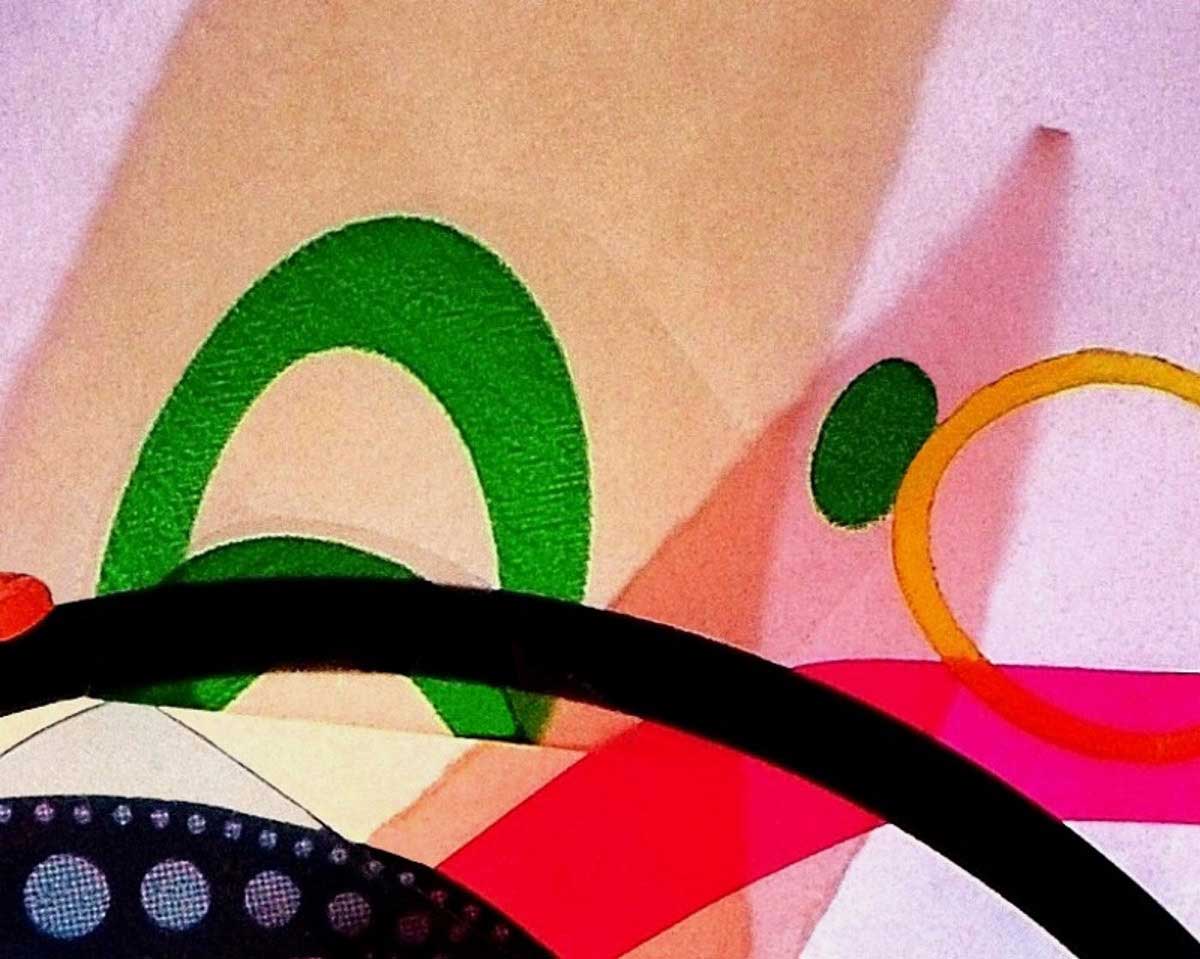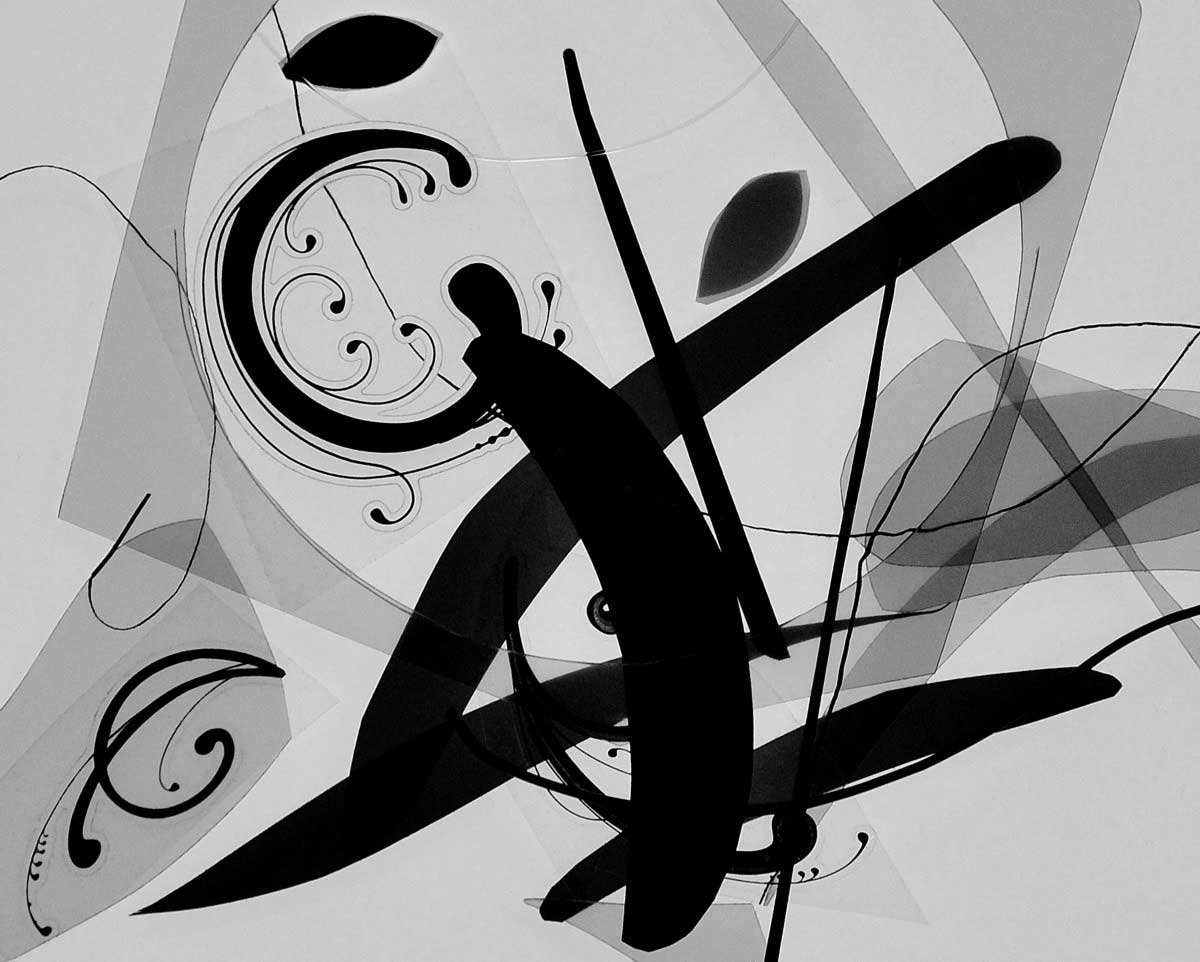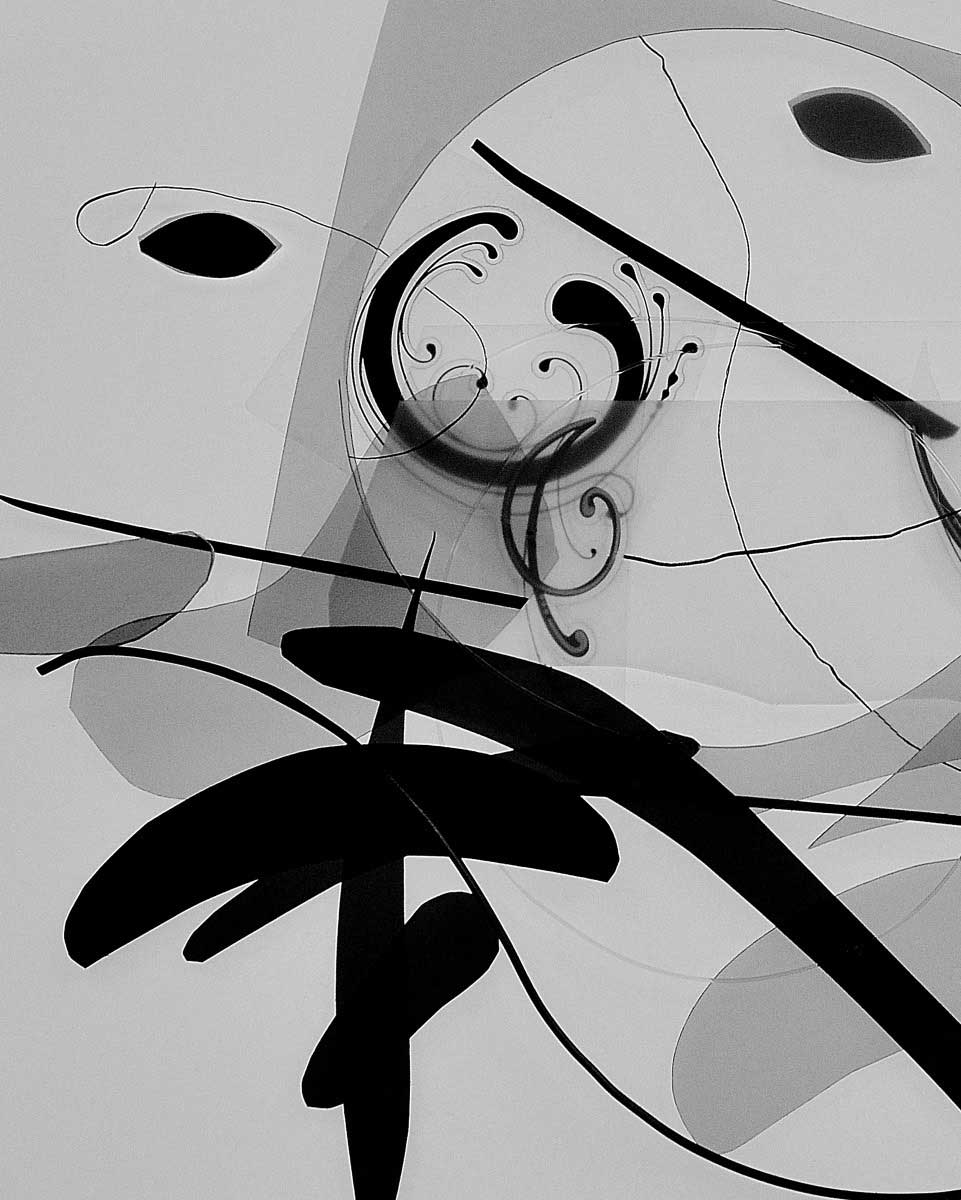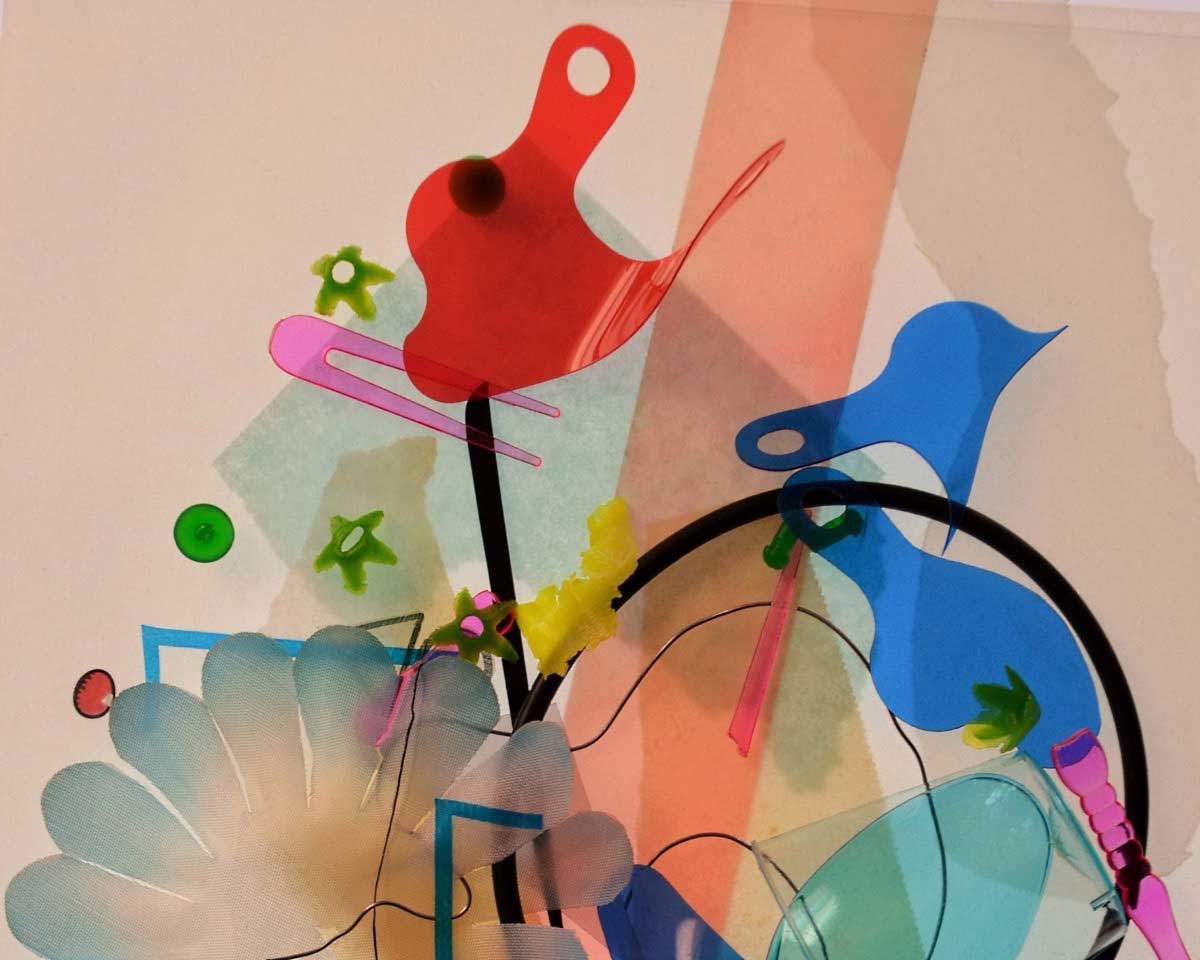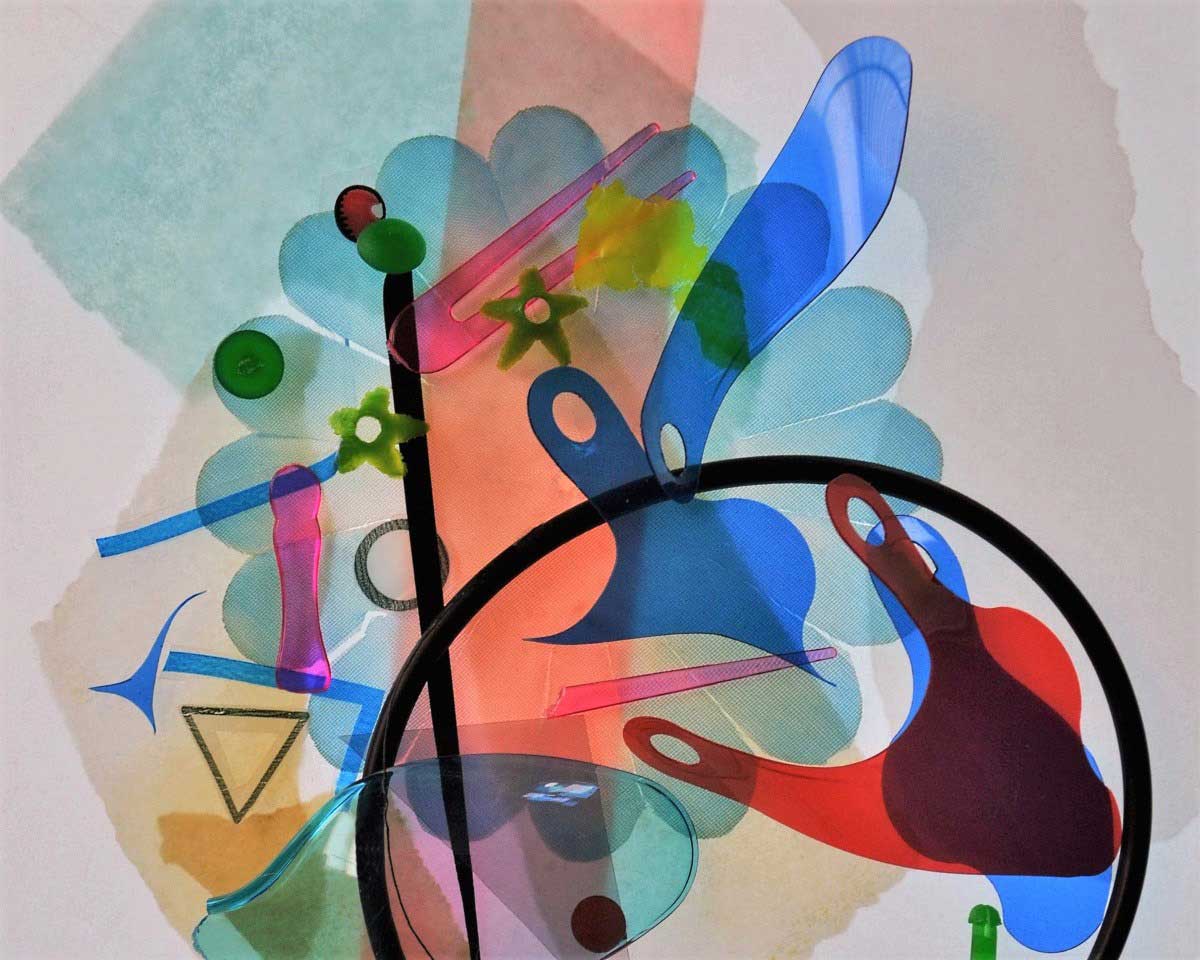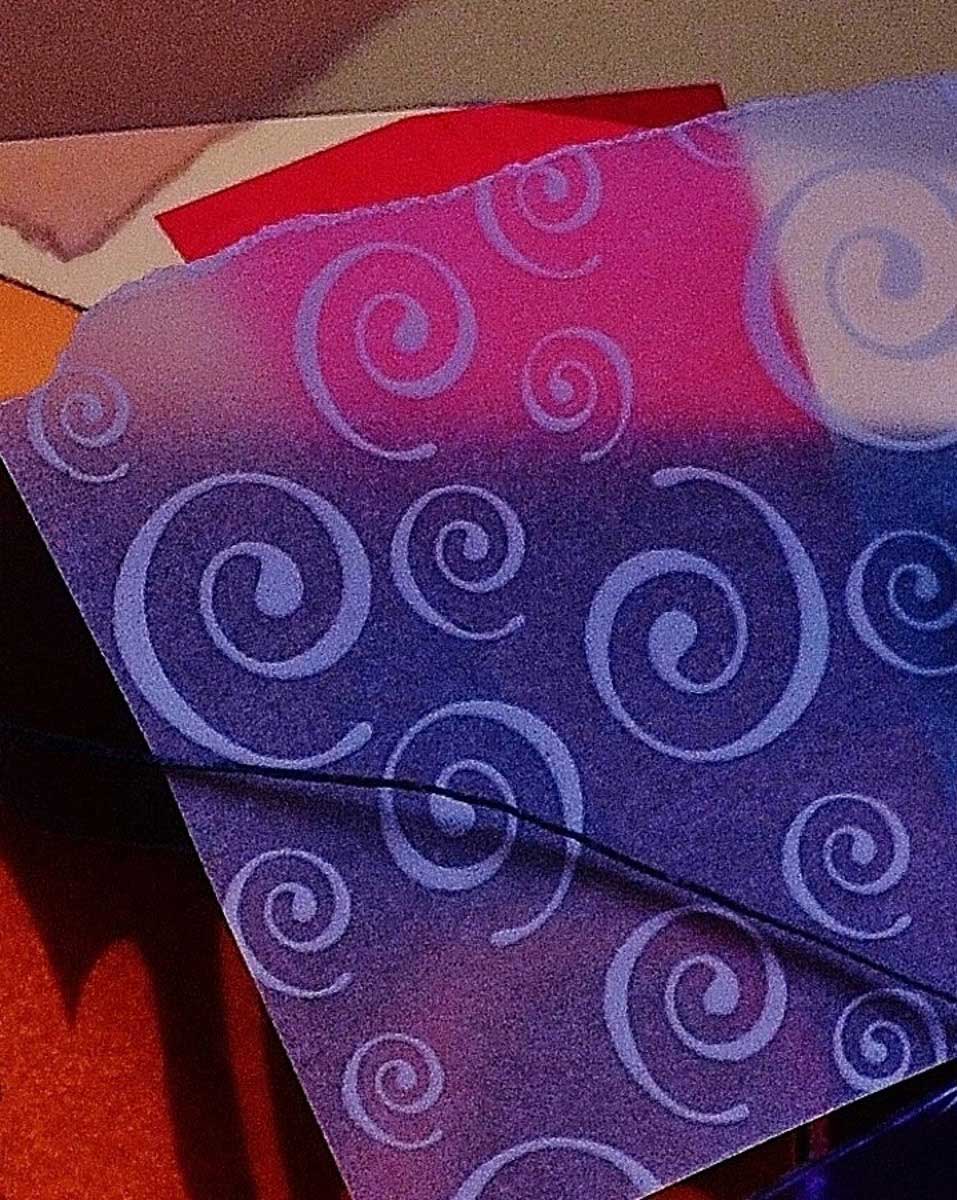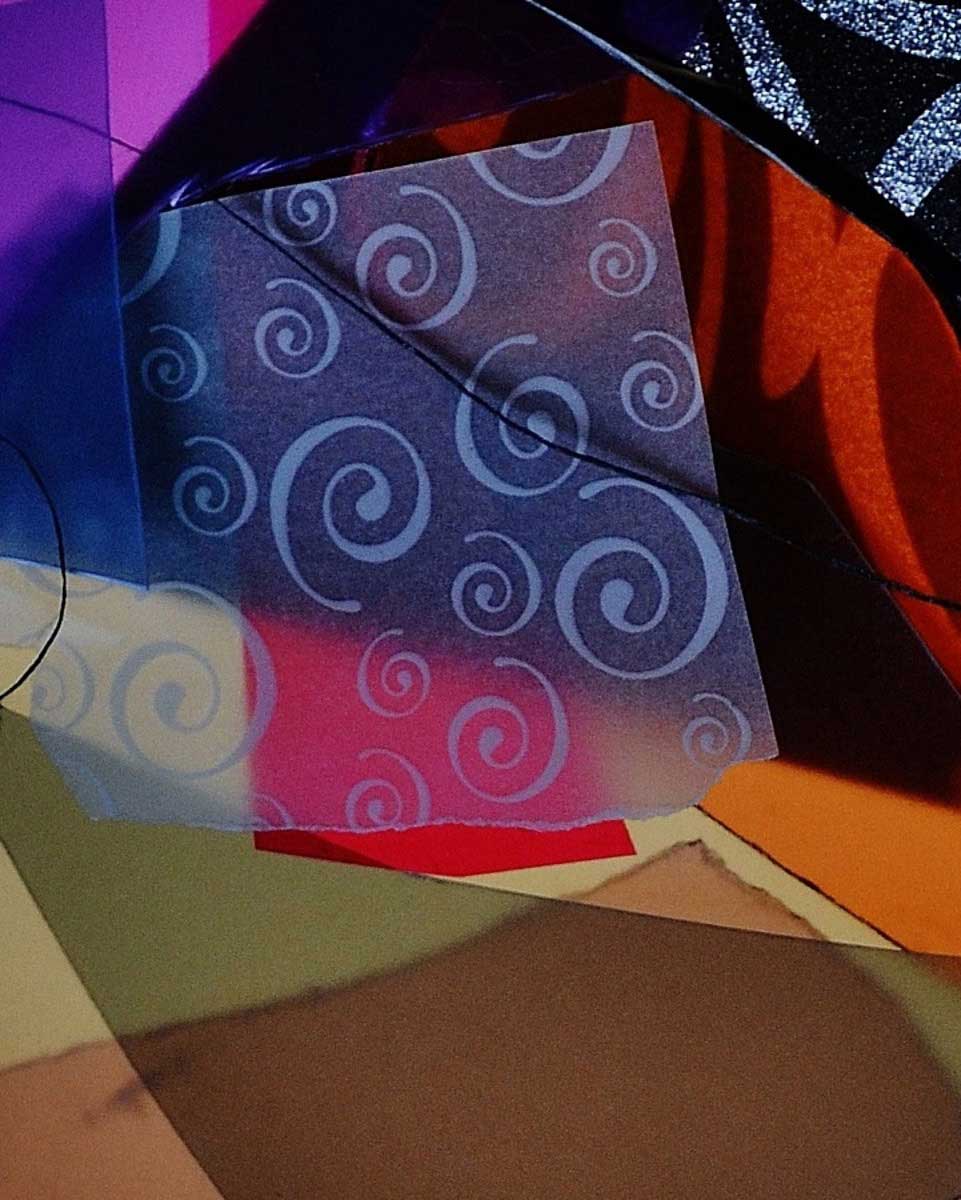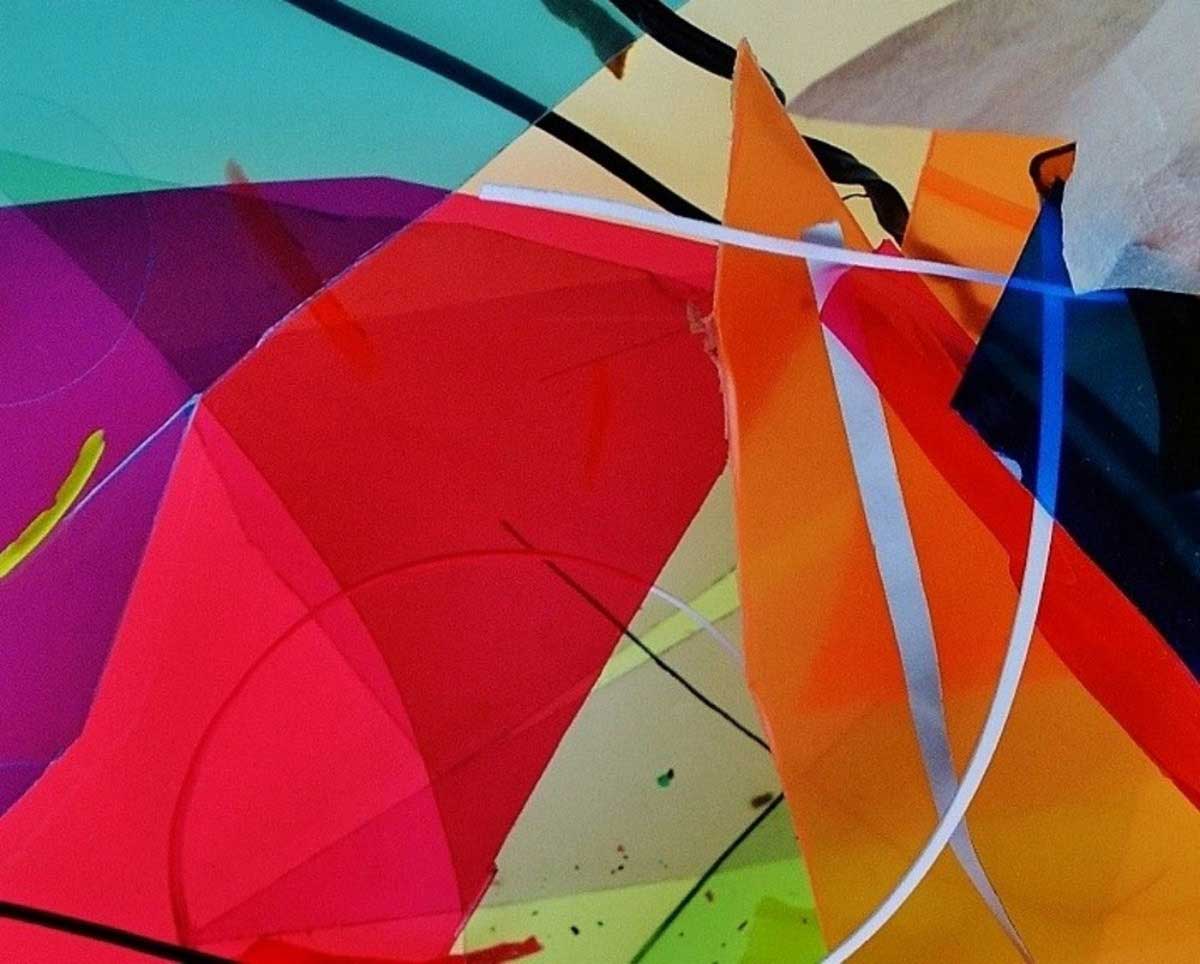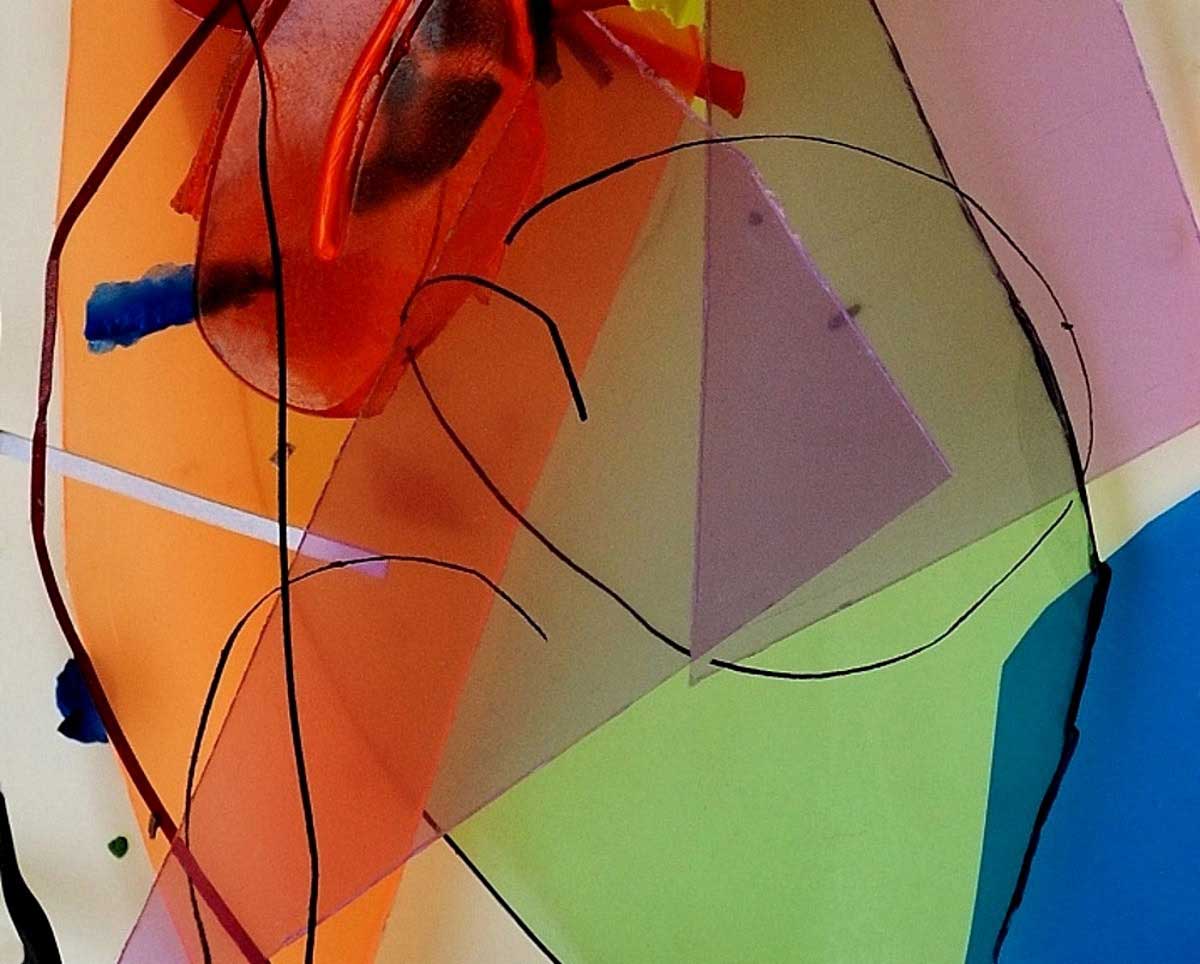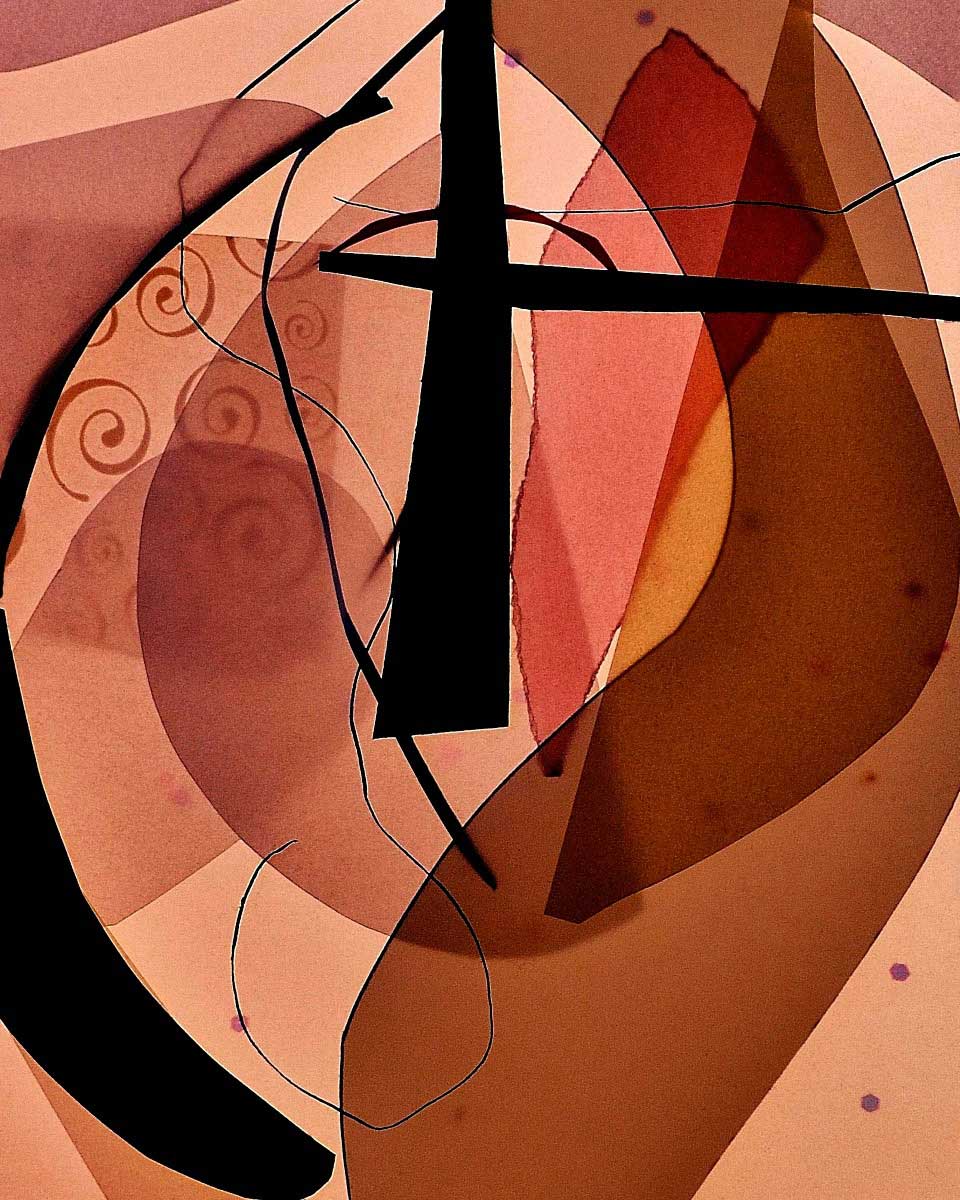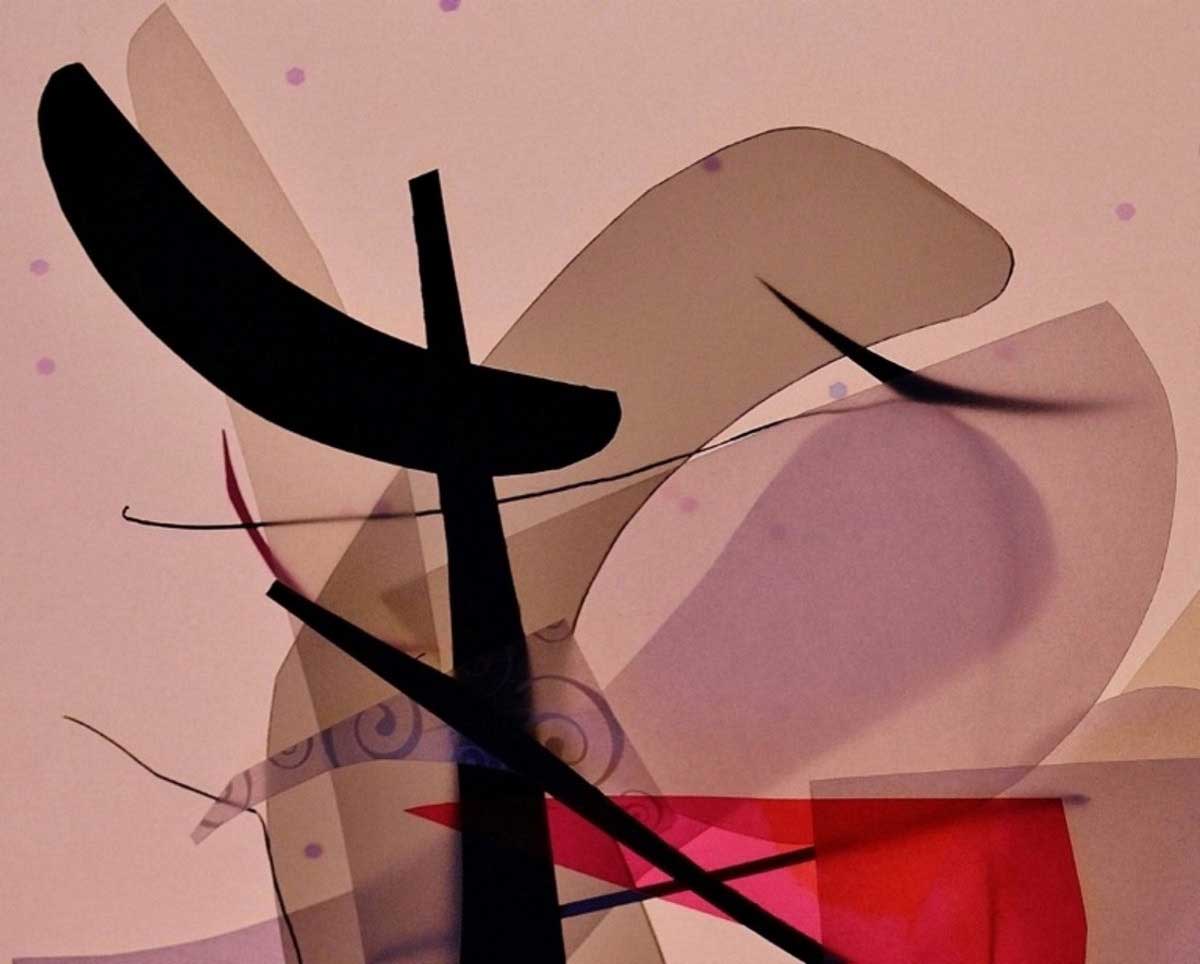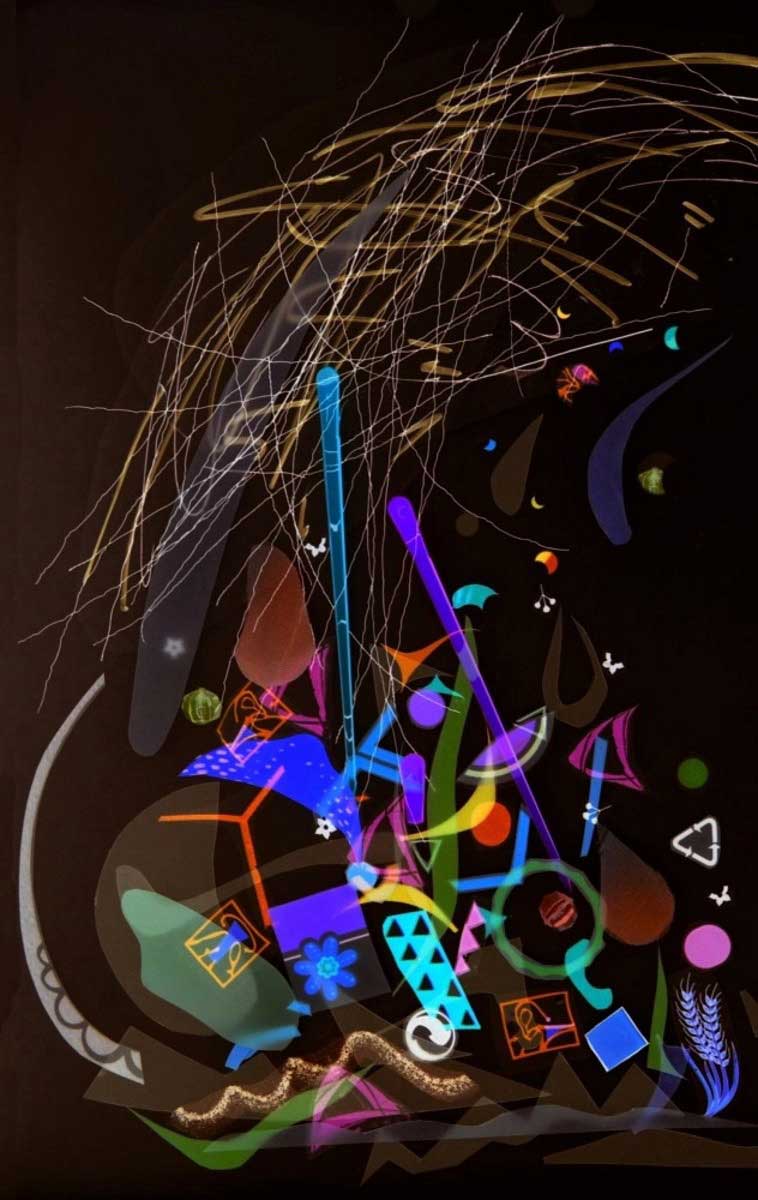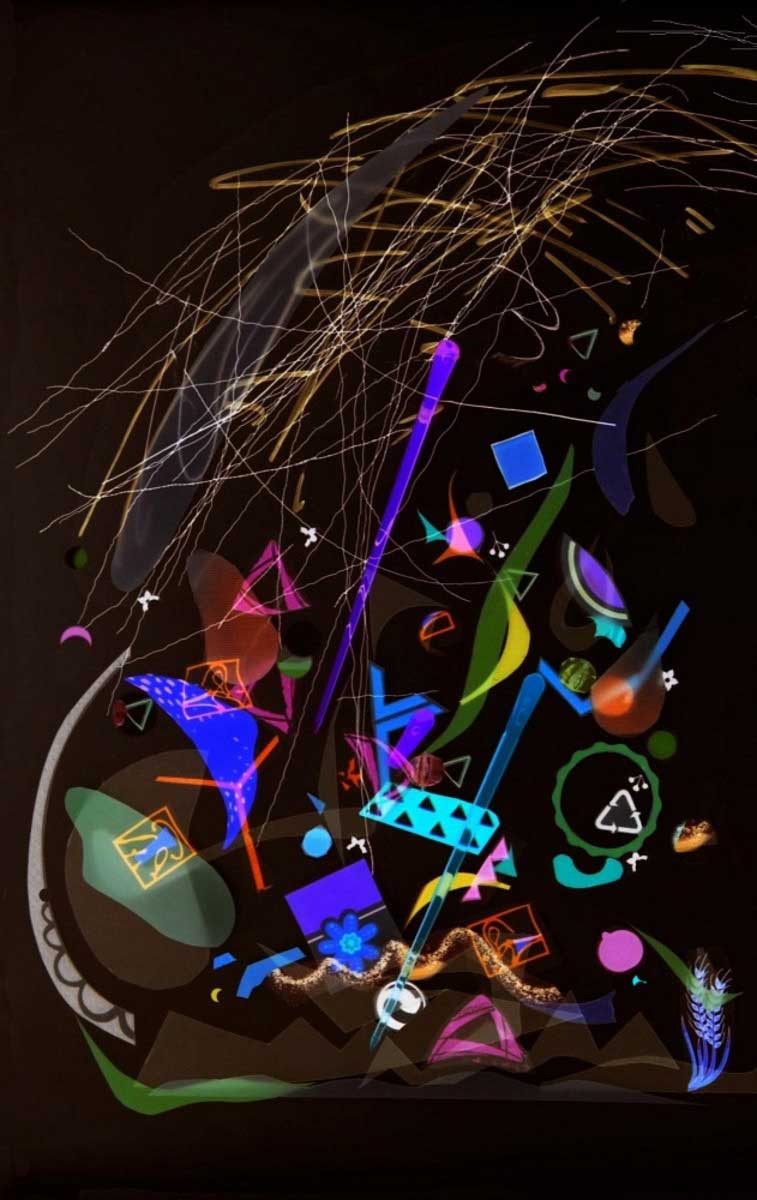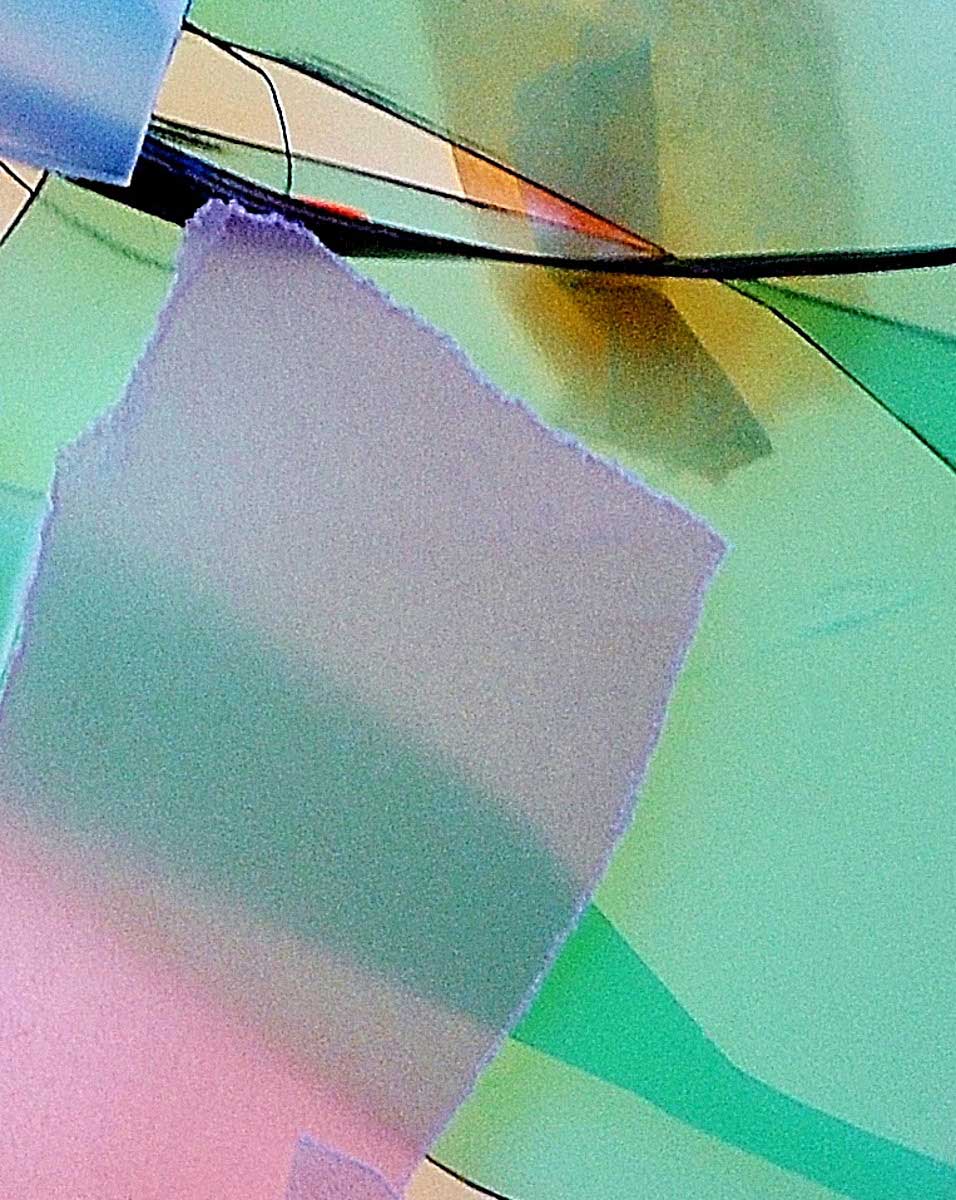Almost daily, artist Lee Musgrave experiments with the assortment of repurposed art supplies and ephemera that has accumulated on his studio work table.
He tosses bits and pieces of it together just to see how it looks. If nothing grabs his imagination then he moves it about or adds more stuff or deletes some and looks again.
When the aesthetic elegance generated by this initial chaos ignites his visual cortex, it sends a shot of adrenalin through his veins and he instinctively reaches for his camera.The resulting photographs survey a subject whose visual persona transcends its socially coerced repute. They also reflect upon humanities consumer-centric existence while articulating aesthetic and critical engagement with the non-material aspects of the subject, revealing its unrealized potential as a source of exploration and inspiration for profound artistic and intellectual exploration.
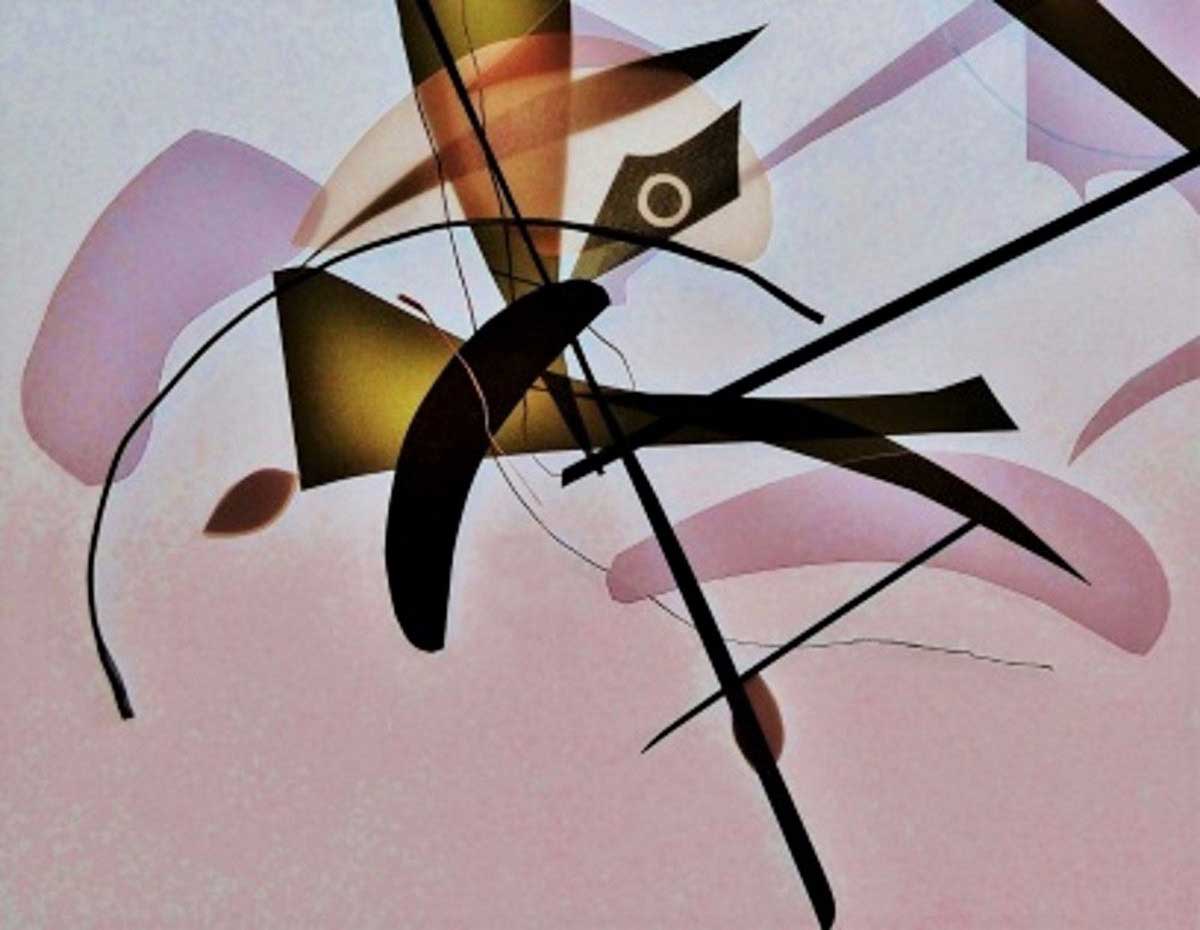
In Musgrave’s work, when ephemera is transformed into art it conveys emotions and ethereal perceptions by suspending the viewer between imagination and reality thereby suggesting the unseen: those elemental phenomena we live by like vim, verve and oomph. Further, as art it invites the viewer to explore their personal perception of impartial objects while focusing on the subtleties that reveal their own inner world of mystical experiences.
Do these ephemeral subjects gain meaning as morphed documents of aesthetic value? How does the dialogue around their now unsullied identity enlighten our perception and valuation of them as nuclei for artistic exploration? The answers to those questions and more can be found within the photographs themselves. As you view the images ponder if they change your thoughts about the potential of ephemera?
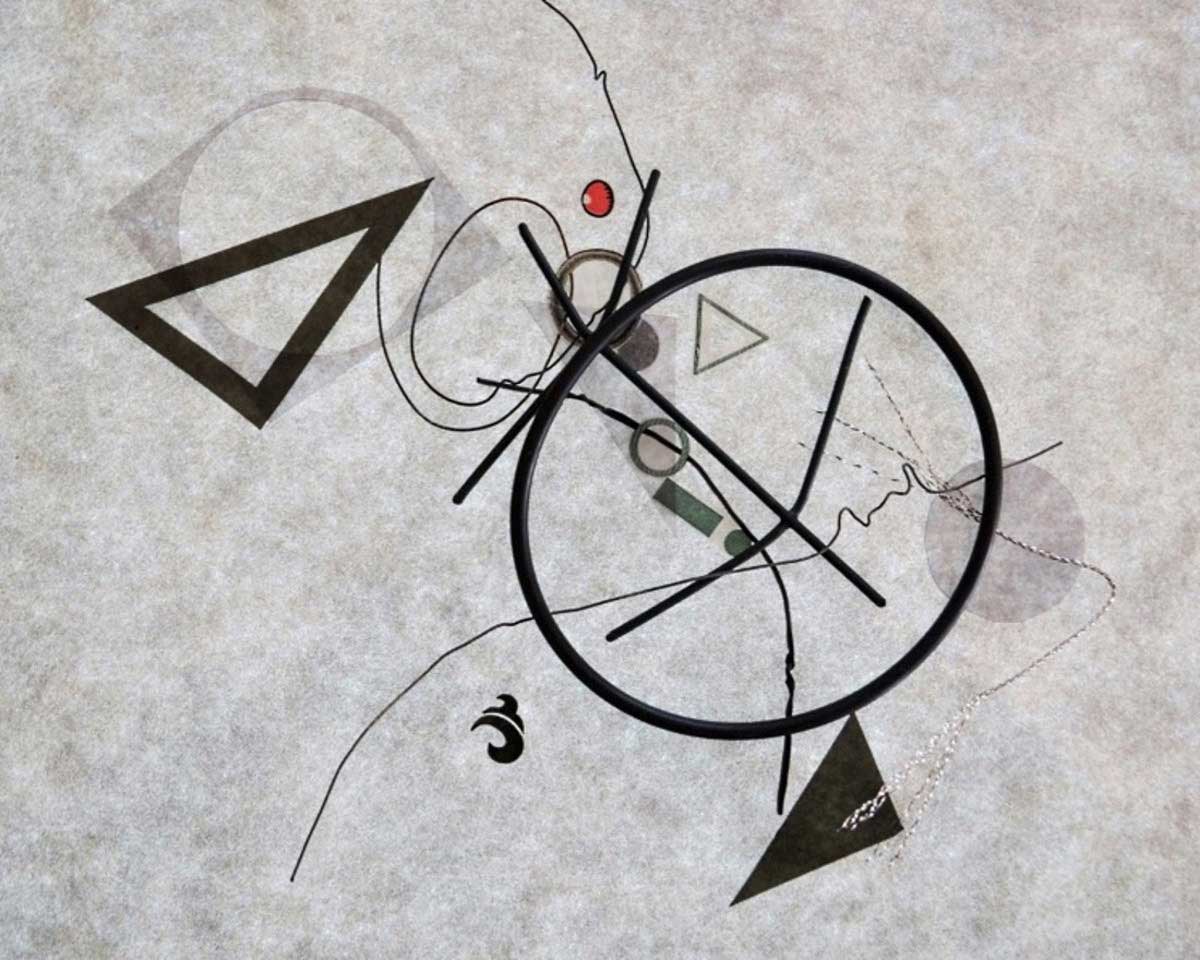
Further these images also endeavor to merge random occurrence with conscious creation in pursuit of visual grace and hopefully the resulting images provide an opportunity for viewers to embrace unpredictability within an approach that values intuition and expressionism … where serendipitous encounters channel risk in the experience of observing and honoring the historic principle of ‘taking advantage of chance’. By intuitively cropping the images Musgrave reveals their undiscovered charisma and by selecting and isolating settings from their context, he pulls representational images from realism into abstraction providing the viewer with more thought provoking realms to ponder.
The images Musgrave selects are defined by his sense for the abstract intangible qualities of light, materials, and composition. From its very beginning photography has been understood as a trace of reality that allows moments that are gone to appear present. It connects with a realm that is beyond our reach and yet manifests itself in the image and thus seems near to us.
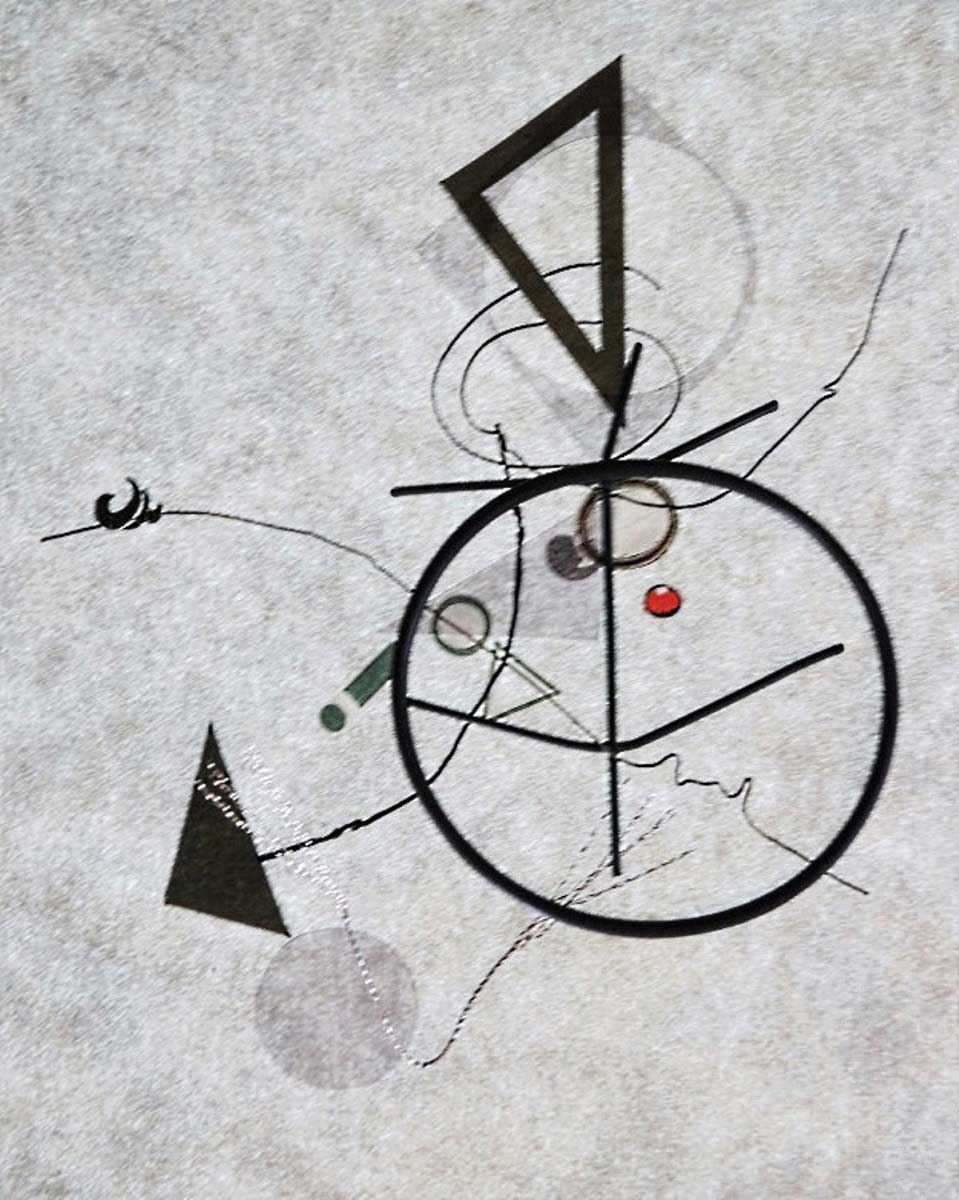
Musgrave seeks in his gleaned compositions to allow color and light to become true material subjects thus projecting an instant of clarity that holds time and preserves thought. Often defying understanding of how the images were made or even that they are photographs at all. This process and its resulting images offer the engaged viewer a path to new ways of seeing, perceiving, thinking and feeling about the world and themselves … and perhaps about honing a sensitivity to new possibilities for humanity to improve.Musgrave’s uses chance in a figurative way and the expressionist results almost require the observer to think “chance” for objects are in many formats, with surprising tints, tones, shapes, and textures and rich with contemporary art-historical allusions.
While chance runs counter to most people’s conceptions of art, it has been a vital component of art since its very beginning Musgrave’s work gains visual force through tapping into the established strengths of Abstract Expressionism, Hard-Edge, Color Field and their respective ideologies while pushing toward new forms and terrain with his own distinctive pictorial lexicon.To him the inescapable appeal of these images is immediate and expressive of spontaneous gestures that are based on insights gained from his many years of creating abstract art. Lee Musgrave’s constructed abstract photography is a refreshingly original contribution to contemporary photography. His fascination with the societal issue of ephemera; to subjecting it to critical scrutiny by extracting artistic imagery from it, and to translating the photographs into his own visual idiom are tempered by his relentless drive to bring forth an optimistic, hopeful view of humanities potential to make better use of everything it produces.
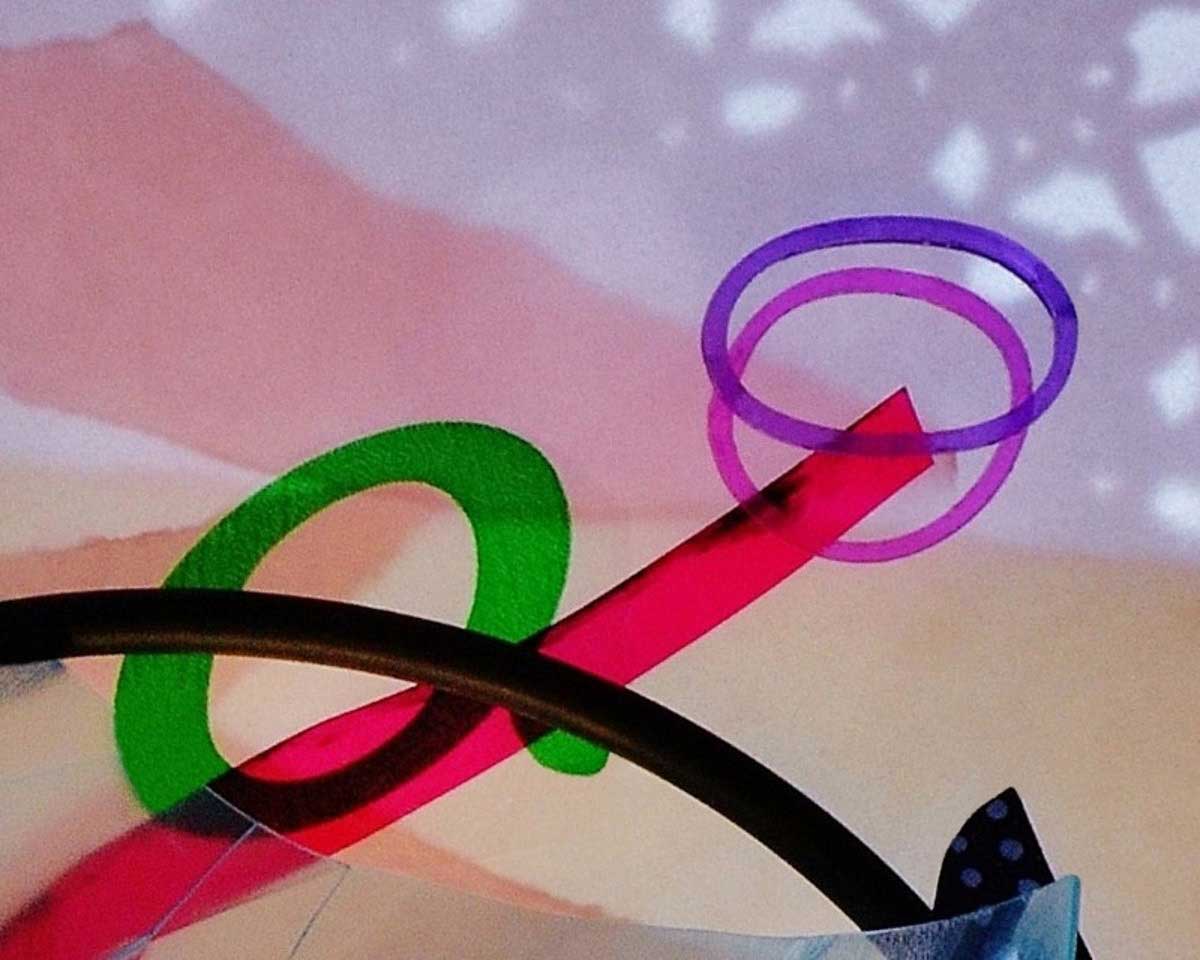
In his working process, he combines a vast array of found contemporary objects that include wrappers, containers, utensils, gadgets, and gismos made of paper, cellophane, plastic, wire, and filaments among other materials. These objects refer to the technological accomplishments of the human race, while simultaneously expressing the artificiality and indifference of how they are used and discarded. Through his aestheticized abstract works, he reminds us of how unthinking wastefulness should be curbed and how important it is for us to rethink our actions with regard to the resources we consume. Originally from Perth, Australia artist Musgrave studied in Los Angeles primarily with Hans Burkhardt and Fritz Faiss. Burkhardt was studio partner of Arshile Gorky and Mark Tobey. Faiss studied at the Bauhaus with Paul Klee and Wassily Kandinsky. “I am deeply indebted to Hans and Fritz for their unfailing encouragement and enduring friendship,” stated Musgrave.
Lee Musgrave is the recipient of an American National Endowment for the Arts Fellowship and his work has been exhibited in numerous solo and group exhibitions. He specializes in constructed abstract photography. He has received several international awards for his work which was featured in the 2016 Berlin Foto Biennale, Berlin, Germany and in the 2017 9th Pollux Awards Exhibition, Barcelona, Spain. He lives in White Salmon, Washington. [Official Website]



